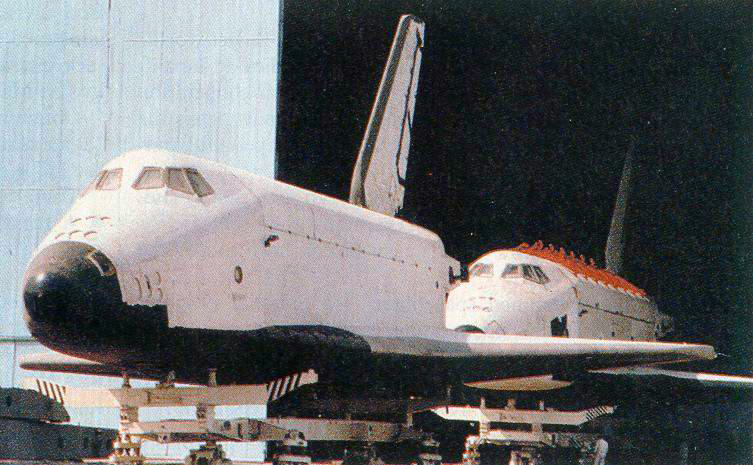
How to get URL link on X (Twitter) App


 As you probably know by now, the Soviets preferred a rather hardware-rich approach in the development of their space shuttle and built a ton of orbiter prototypes (7) to fuck around and, as a consequence, find out.
As you probably know by now, the Soviets preferred a rather hardware-rich approach in the development of their space shuttle and built a ton of orbiter prototypes (7) to fuck around and, as a consequence, find out. 

 When the Buran program was approved in 1976, the initial order called for a fleet of two orbiters, These constituted the "first series" with NPO Molniya airframe numbers 1.01 and 1.02. (NPO Energia designators 1K and 2K, respectively).
When the Buran program was approved in 1976, the initial order called for a fleet of two orbiters, These constituted the "first series" with NPO Molniya airframe numbers 1.01 and 1.02. (NPO Energia designators 1K and 2K, respectively). 

https://twitter.com/DKiSAerospace/status/1819878152555876729
 The original 1970s schedule assumed two suborbital Energia missions with full scale orbiter mock-ups (this is how OK-M and OK-GLI got their early designators OK-ML1 and OK-ML2 - "Flight Mockup 1" and "-2") and then in 1984 the first flight orbiter would be launched uncrewed.
The original 1970s schedule assumed two suborbital Energia missions with full scale orbiter mock-ups (this is how OK-M and OK-GLI got their early designators OK-ML1 and OK-ML2 - "Flight Mockup 1" and "-2") and then in 1984 the first flight orbiter would be launched uncrewed.

 The original plan to launch two orbiter mockups on suborbital test flights of the Energia before an orbital flight with a complete Buran orbiter had changed a lot by the early 80s. The suborbital flights were axed and the complete orbiter would fly on the maiden Energia launch.
The original plan to launch two orbiter mockups on suborbital test flights of the Energia before an orbital flight with a complete Buran orbiter had changed a lot by the early 80s. The suborbital flights were axed and the complete orbiter would fly on the maiden Energia launch. 




 0.01 (1M, OK-ML1, OK-M)
0.01 (1M, OK-ML1, OK-M)







 In the third week of May 1988, the Buran-Energia 1L stack was rolled out to pad 110/37. The May-June pad tests did not include the fueling of the rocket or orbiter.
In the third week of May 1988, the Buran-Energia 1L stack was rolled out to pad 110/37. The May-June pad tests did not include the fueling of the rocket or orbiter. 



 The airframe of 1K (which is the official designation of the first flight series orbiter, "Buran") was built by NPO Molniya in the Tushino Machine-Building Plant (TMZ) between around 1983 and 1985.
The airframe of 1K (which is the official designation of the first flight series orbiter, "Buran") was built by NPO Molniya in the Tushino Machine-Building Plant (TMZ) between around 1983 and 1985.





 The Shuttle uses two Solid Rocket Boosters and 3 main hydrolox engines (RS-25) mounted to the orbiter, Energia-Buran has 4 kerolox boosters (with RD-170 engines) and 4 main hydrolox engines (RD-1020) mounted to the core stage.
The Shuttle uses two Solid Rocket Boosters and 3 main hydrolox engines (RS-25) mounted to the orbiter, Energia-Buran has 4 kerolox boosters (with RD-170 engines) and 4 main hydrolox engines (RD-1020) mounted to the core stage. 
